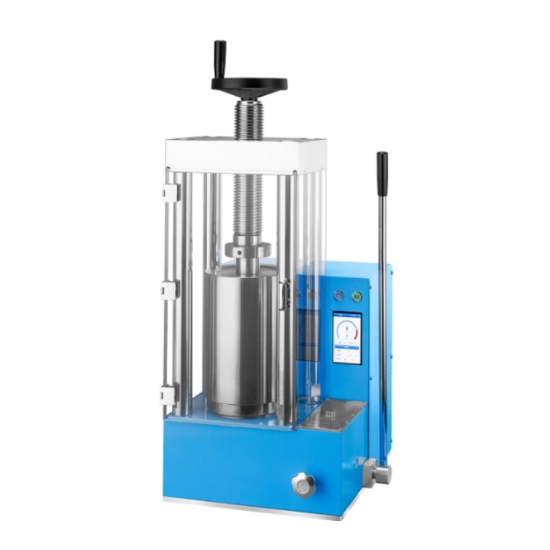Xiamen Tmax Battery Equipments Limited was set up as a manufacturer in 1995, dealing with Laboratory equipments, technology, etc. We have total manufacturing facilities of around 2, 000 square meters and more than 100 staff. Owning a group of experie-nced engineers and staffs, we can bring you not only reliable products and technology, but also excellent services and real value you will expect and enjoy.
Laboratory Cold Isostatic Pressing (CIP) is a critical technique used in research and development settings for the compaction of powders into green parts without the application of heat. This process utilizes hydrostatic pressure transmitted through a liquid medium to apply uniform pressure from all directions onto the material, resulting in highly dense and uniform products. Laboratory CIP systems are particularly useful for developing new materials, testing material properties under controlled conditions, and preparing samples for further processing or analysis.
Key Features of Laboratory Cold Isostatic Pressing
1. Compact Design
Designed to fit within laboratory environments with limited space. These systems are typically smaller than their industrial counterparts but still offer significant capabilities.
2. Uniform Pressure Application
Utilizes a liquid medium, such as water or oil, to transmit pressure uniformly around the material being pressed. This ensures that the compaction force is applied equally from all directions, leading to a more homogeneous product.
Capable of generating pressures up to several thousand bars, depending on the specific model and requirements.
3. Material Encapsulation
Materials to be pressed are placed inside flexible, airtight containers or molds before being subjected to pressure. These containers prevent contamination from the liquid medium while ensuring even pressure distribution.
The flexibility of these containers allows for the creation of components with complex geometries, which might be difficult to achieve using other pressing techniques.
4. Versatility
Suitable for a wide range of materials including metal powders, ceramics, graphite, carbides, and other advanced materials.
Ideal for applications requiring high density and uniformity, such as powder metallurgy, ceramics, electronics, and medical devices.
Isostatic Pressing Machine
5. Control Systems
Equipped with userfriendly interfaces, often featuring PLCs (Programmable Logic Controllers) or HMIs (HumanMachine Interfaces), allowing operators to set and monitor parameters like pressure and cycle time easily.
Some models include data logging capabilities to track process parameters, aiding in quality assurance and compliance with industry standards.
6. Advantages in Research Settings
High Density and Uniformity: Produces parts with high density and uniform microstructure, crucial for subsequent processing steps such as sintering.
Complex Geometry Handling: Enables the creation of parts with intricate designs, offering greater design freedom compared to traditional pressing methods.
CostEffective: Provides an affordable solution for R&D settings, offering similar benefits to larger industrial systems but at a reduced cost and footprint.
Ease of Use: Designed for ease of operation and maintenance, facilitating quick setup and turnaround times, which is especially beneficial in experimental work.
7. Applications in Laboratories
Material Development: Used for creating prototypes or samples of new materials to test their mechanical properties, density, and performance under various conditions.
Sample Preparation: Essential for preparing specimens for further analysis or testing, such as IR spectroscopy, XRF analysis, or mechanical testing.
SmallScale Production: Useful for producing small quantities of components for pilot production runs or specialized applications where only a few items are needed.
Choosing the right laboratory cold isostatic press depends on your specific needs, including the types of materials you will be working with, desired pressure ranges, part geometry, and production volume. Investing in a laboratory CIP system tailored to your requirements can significantly enhance your research and development efforts by providing precise control over the compaction process, thereby improving the quality and reliability of your results. Whether you're focusing on material science, engineering, or any field requiring highquality sample preparation, a laboratory CIP can be an invaluable tool.

